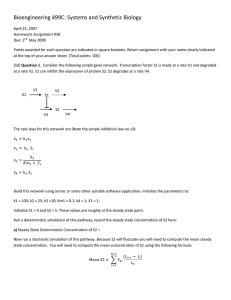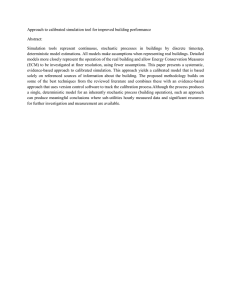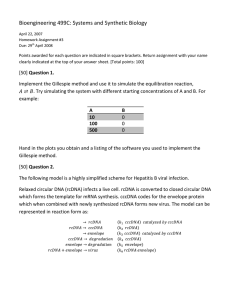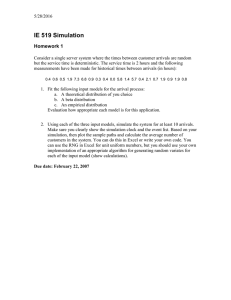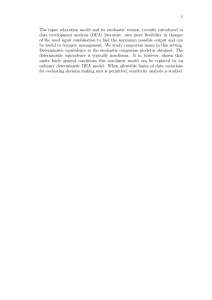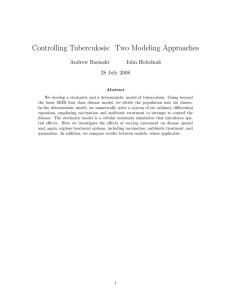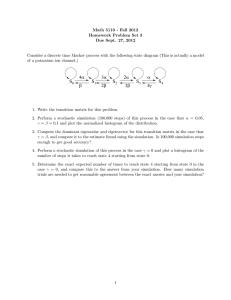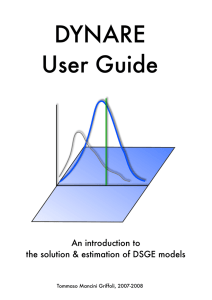Bioengineering 498A: Systems and Synthetic Biology
advertisement
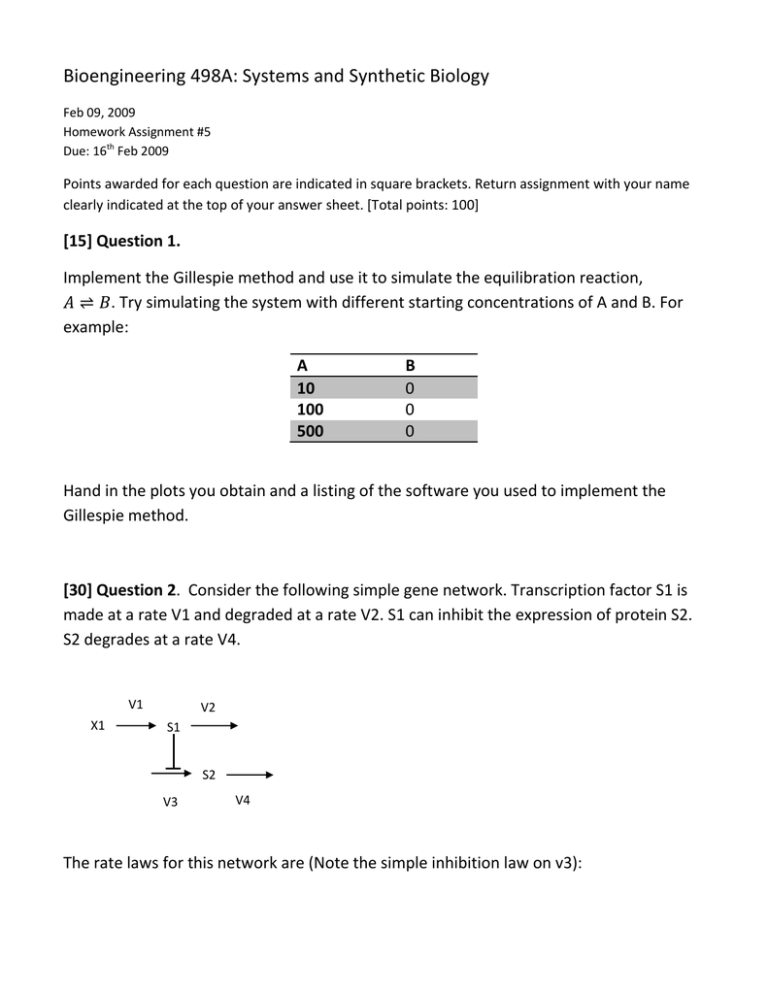
Bioengineering 498A: Systems and Synthetic Biology Feb 09, 2009 Homework Assignment #5 Due: 16th Feb 2009 Points awarded for each question are indicated in square brackets. Return assignment with your name clearly indicated at the top of your answer sheet. [Total points: 100] [15] Question 1. Implement the Gillespie method and use it to simulate the equilibration reaction, . Try simulating the system with different starting concentrations of A and B. For example: A 10 100 500 B 0 0 0 Hand in the plots you obtain and a listing of the software you used to implement the Gillespie method. [30] Question 2. Consider the following simple gene network. Transcription factor S1 is made at a rate V1 and degraded at a rate V2. S1 can inhibit the expression of protein S2. S2 degrades at a rate V4. V1 X1 V2 S1 S2 V3 V4 The rate laws for this network are (Note the simple inhibition law on v3): Build this network using Jarnac or some other suitable software application. Initialize the parameters to: k1 = 100; k2 = 25; k3 =10; Km1 = 0.1; k4 = 1; X1 = 1; Initialize S1 = 4 and S2 = 5. These values are roughly at the steady state point. Run a deterministic simulation of this pathway, record the steady state concentration of S2 here: [15] a) Steady State Deterministic Concentration of S2 = Now run a stochastic simulation of this pathway. Because S2 will fluctuate you will need to compute the mean steady state concentration. You will need to compute the mean concentration of S2 using the following formula: Where . = the time at the end of the simulation (as recorded in the result matrix!) and is the concentration of S2 at time point Compute the mean concentration of S2 using the above formula and record it here: Mean S2 = [5] b) Explain why it is necessary to use the above formula to compute the mean S2 rather than simply summing up all the S2 concentrations and computing the average. [10] c) Explain why the deterministic and stochastic steady state levels are different? [30] Question 3. In this question you will investigate a model that mimics protein synthesis. V2 V1 X1 mRNA Protein V3 V4 The rate laws for this model are: Carry out two types of simulation on this model, deterministic and stochastic. Protein and mRNA levels can be set to zero at the start of the simulation. Run a simulation for about 200 time units (or whatever is convenient) and plot the graphs for mRNA and Protein. Investigate the model under two sets of parameters: 1. k1 = 80; k2= 200; Km1 = 10; k4 = 1; 2. k1 = 0.1; k2 = 0.25; Km1 = 10; k4 = 1; [10] a) What difference do you observe when you carry out stochastic simulations using the two parameter sets? [20] b) Explain in mechanistic terms why the two behaviors are different. To help you answer his question, observe closely the difference in the two parameter sets. [25] Question 4. This question is in two stages. [10] a) Simulate the following model using the Euler integration method (See Algorithm 1 at end of assignment). Xo -> S1 -> S2 -> X1 Where Xo and X1 are fixed species. Each step is governed by a simple irreversible massaction rate law. Use the rate laws: v1 = k1 Xo v2 = k2 S1 v3 = k3 S2 Set k1 = 0.1; k2 = 0.2; k3 = 0.15. Initialize Xo = 10 mM and X1 = 0. Simulate for forty time units. Recall that both the Euler and Chemical Langevin methods can work with continuous variables so we do not specify the actual number of molecules but just the concentration. [15] b) Modify the Euler method you implemented in a) to simulate the same network of three irreversible reaction steps using the Chemical Langevin Method (Look up the algorithm on your class slides). If you’re using Jarnac you can use stats.gauss (mean, std) to generate your Gaussian distributed random numbers. If you use Matlab for this question, randn(1) will generate Gaussian generated random numbers with mean zero and standard deviation 1. To generate a Gaussian generated random number with a different standard deviation just use: std*randn(1) where std is your chosen standard deviation.
